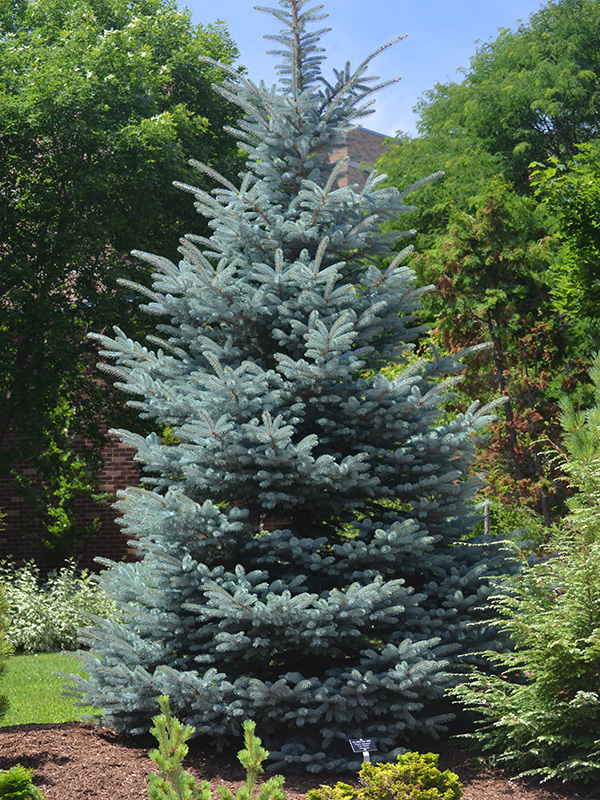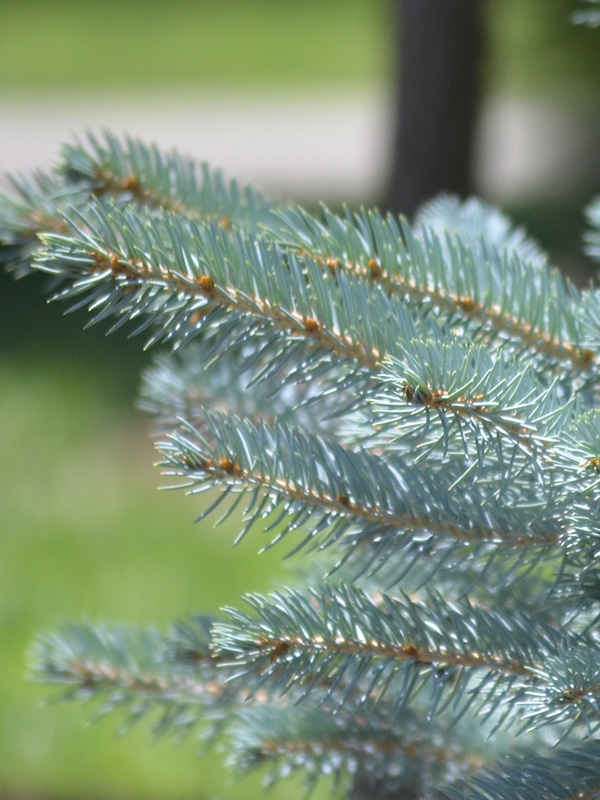| General Description | Picea pungens 'Fat Albert' or Fat Albert Colorado Spruce is a slow growing dwarf evergreen tree, known for it's broadly rounded and upright shape. It is similar to Picea pungens 'Montgomery' but can grow to be nearly twice as tall. |
| ID Characteristic | A dense evergreen with a distinct pyramidal form, strong central leader and very pointy silvery-blue needles.
|
| Shape | Densely pyramidal with a broad base starting fairly close to the ground and a naturally straight central leader. |
| Landscape | Often used as a specimen or accent plant in home gardens. Can be used in group plantings because of its colour consistency. Also used in xeriscaping because of its drought tolerance. |
| Propagation | By grafting. Scions are grafted onto dormant Picea abies rootstock during the winter months in particular January / February. During grafting, plants should be kept in a humidity frame which allows for higher water potential and less stress during the process. Soaking scion bases in 200 ppm IBA for three minutes before grafting is beneficial. Air layering has also been proven successful. |
| Cultivation | Prefers slightly acidic, moist soil though it is drought tolerant. Ideally grown in full sun; good drainage is required. Highly tolerant of salts and other urban pollution and has been known to thrive in city environments. |
| Pests | This cultivar is quite resistant to pests and diseases. |
| Notable Specimens | The Gardens of Fanshawe College, H Building courtyard, London, Ontario, Canada.
|
| Habitat | Horticultural origin. |
| Bark/Stem Description | Quite rough and scale-like, grey-brown. New shoots are vivid orange. |
| Flower/Leaf Bud Description | About 1 cm in length, loosely scaled and vivid orange. |
| Leaf Description | Needles are very stiff and sharp reaching about 3 cm in length. They are almost square in shape and equally distributed on the branches in a perpendicular fashion. Their rich silvery-blue intensifies both on new growth and in the winter season. |
| Flower Description | A non-flowering cultivar. |
| Fruit Description | Sterile. |
| Colour Description | Bark is a light grey-brown, new shoots are orange, needles an intense blue. |
| Texture Description | Medium texture: bark and needles are fairly rough. |

